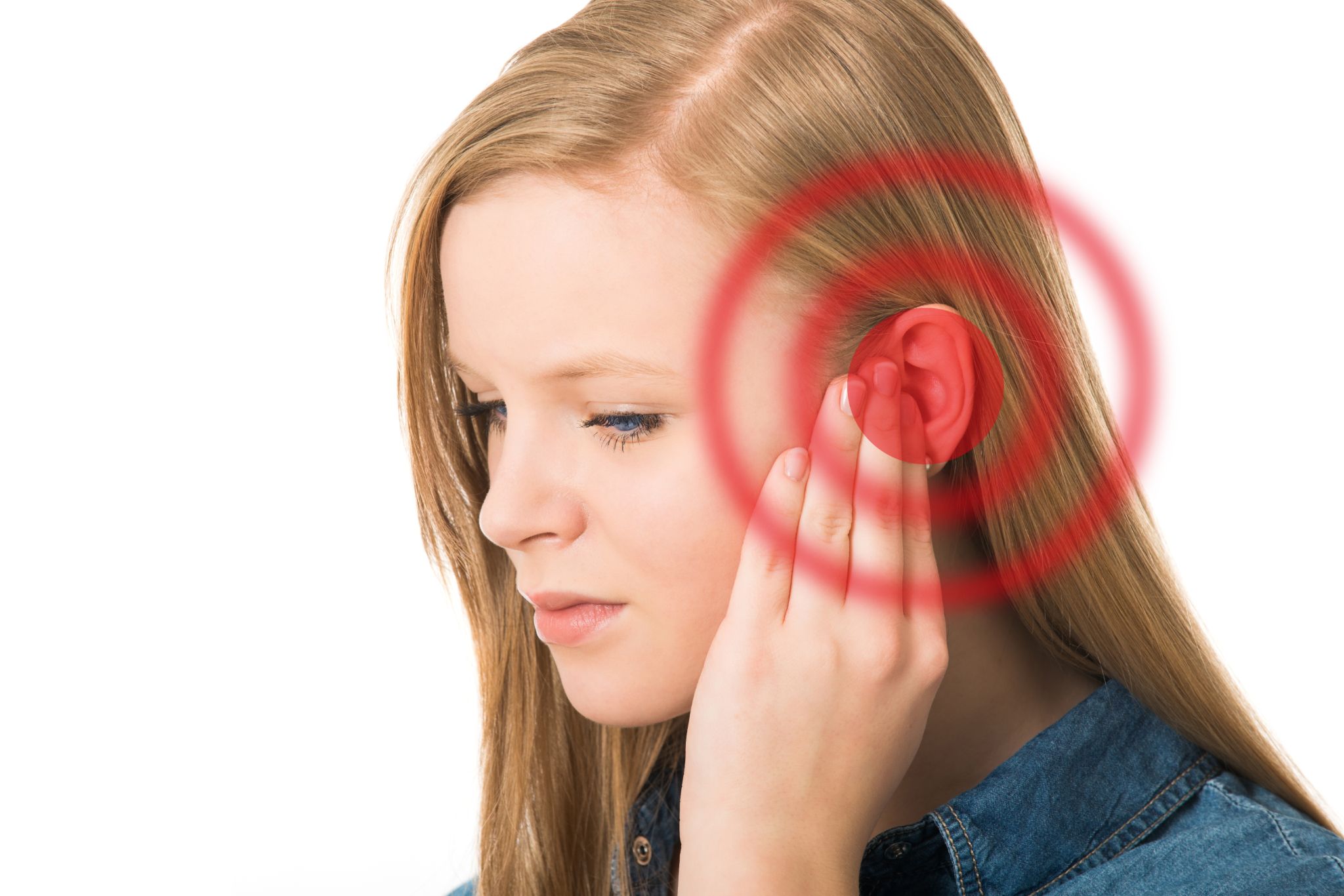Occasionally, ear pain and headaches appear at the same time. Several disorders can lead to this pairing, including middle ear infections and migraine. How these symptoms are treated depends on the underlying cause.

Both earache and headache are frequent complaints. When they occur independently, they can stem from a range of medical issues.
But what does it signify when ear pain and headache coincide? There are multiple health problems that can produce both symptoms simultaneously.
What leads to simultaneous earache and headache?
If you’re experiencing ear pain and headache together, several different conditions might be responsible. Below we outline each possible cause, how it develops, and the typical accompanying signs.
Middle ear infection
Middle ear infections, known as otitis media, are caused by viruses or bacteria. Inflammation from the infection can obstruct the eustachian tubes, which equalize pressure in the ear and allow fluid to drain.
The inflammation and fluid accumulation produce ear pain. A headache can also be present.
Other symptoms of a middle ear infection include:
- fever
- difficulties sleeping
- reduced appetite
- fluid draining from the ear
- trouble hearing
- balance problems
In infants and toddlers, signs can include irritability, increased fussiness, or pulling at or rubbing the ear.
Temporomandibular joint dysfunction
Temporomandibular joint (TMJ) dysfunction refers to pain and dysfunction of the jaw joint that connects the lower jaw to the skull. Trauma can trigger TMJ problems, though often the exact cause is unknown.
The trigeminal nerve runs near the TMJ and transmits facial sensation to the brain. Because of this connection, pain originating from the TMJ can be perceived in the ear. People with TMJ dysfunction may also have headaches.
Additional signs of TMJ dysfunction include:
- pain centered in the jaw that may radiate to the face or neck
- a clicking or popping feeling when opening the mouth, often painful
- jaw locking or limited range of motion
- noticeable changes in how the top and bottom teeth align
- other ear-related complaints such as dizziness or tinnitus
Migraine
Migraine is a recurrent headache disorder characterized by throbbing or pulsing pain, commonly on one side of the head. It can be triggered by various factors, including strong smells, missed meals, bright lights, or weather shifts.
Some migraine attacks are preceded by an aura — a group of neurological symptoms. Other common migraine features include sensitivity to light, sound, or odors, along with nausea and vomiting.
Because the trigeminal nerve can be involved in migraine, some people also report ear pain. A 2022 review found that 65% of participants with unexplained ear pain met criteria for migraine. For related overlapping symptoms, see headache from acid reflux.
Mastoiditis
Mastoiditis is an infection affecting the mastoid bone located just behind the ear. It can develop as a complication of a middle ear infection.
Both ear pain and headache can be symptoms of mastoiditis. Other possible signs include:
- swelling or redness of the skin behind the ear (a warning sign that warrants medical evaluation)
- fever
- lethargy
- fluid draining from the ear
- hearing difficulties
- irritability or fussiness in infants and toddlers
- pulling or rubbing the ear in very young children
Occipital neuralgia
Occipital neuralgia affects the occipital nerves, which run from the upper neck to the scalp at the back of the head. It arises from compression or irritation of these nerves.

This condition causes pain that begins at the base of the skull and radiates to the scalp. The sensation is often shooting, burning, or throbbing and can sometimes be felt behind the ear. Other typical pain locations include:
- the upper neck
- the back of the head
- the scalp
- the forehead or area behind the eyes
Tinnitus
Tinnitus is the perception of ringing, buzzing, or roaring sounds in the ears. It can arise from many causes, including loud noise exposure, hearing loss, certain medications, or chronic health conditions.
Some people with tinnitus also experience headaches. Research suggests the relationship between headache and tinnitus may be bidirectional, meaning each can influence the other.
Depending on the root cause, tinnitus can be accompanied by ear pain. Other ear-related symptoms that may occur with tinnitus include:
- a feeling of fullness in the ear
- dizziness
- ear discharge
Acoustic neuroma
An acoustic neuroma is a noncancerous growth that affects the vestibular nerve in the inner ear. These tumors generally arise without a clear cause.
When an acoustic neuroma enlarges, it can occasionally trigger headaches and sometimes ear pain. Additional signs may include:
- hearing loss
- tinnitus
- dizziness or vertigo
- coordination issues (ataxia)
- facial numbness or weakness
- blurred or double vision
- trouble swallowing
What causes one-sided headache and ear pain?
Several of the conditions described above can cause pain that is limited to one side. That’s because some ear disorders affect only the left or only the right ear.
Examples of conditions more likely to produce symptoms on a single side include:
- middle ear infections
- mastoiditis
- acoustic neuroma
- migraine
Conditions that may affect either one or both ears or sides of the head include:
- TMJ dysfunction
- occipital neuralgia
- tinnitus
What can cause headache, ear pain, and scalp discomfort?
Certain disorders that produce headaches and ear pain can also cause scalp tenderness or pain. These include:
- occipital neuralgia
- migraine
- TMJ disorder, particularly when the temporalis muscle is inflamed
When to see a doctor
It’s wise to seek medical attention if you experience a headache and ear pain that:
- starts abruptly
- is severe
- persists or keeps returning
- returns or worsens despite home care
A clinician can order tests to identify the underlying cause of concurrent headache and ear pain.
How the cause is diagnosed
To determine the cause of headache and ear pain, a doctor will begin with your medical history. They’ll ask about items such as:
- details of your headache and ear pain, including when it began, how it feels, how intense it is, the precise location, and any triggers or relieving factors
- any other symptoms you’re experiencing
- existing medical conditions
- over-the-counter or prescribed medications you take
Then they’ll perform a physical exam, which may include a neurologic assessment. They’ll inspect your head and neck and look inside your ears for discharge, pus, or signs of inflammation.
Possible tests your provider might request include:
- imaging of the head and neck (X-rays, CT, or MRI)
- tympanometry to assess eardrum mobility
- audiometry to evaluate hearing
- blood tests
Treatment for ear pain and headache
Management of earache and headache depends on the diagnosis and may involve several strategies.
Home measures
Home approaches that may help include:
- applying a warm compress to the affected ear
- resting in a quiet, dim room
- using heat or cold packs on sore areas of the head or scalp
- gently massaging tight or painful spots on the head or scalp
Medications
Over-the-counter pain relievers such as acetaminophen or NSAIDs can ease ear and head pain.
Prescription options may include:
- antibiotics for bacterial infections
- acute and preventive migraine medications
- antiseizure drugs sometimes used for TMJ or occipital neuralgia
- nerve blocks, steroid injections, or Botox for occipital neuralgia
- anti-anxiety or antidepressant drugs to help mood in people with TMJ problems or tinnitus
Medical and procedural treatments
Certain causes may require procedures or other interventions. Examples include:
- Surgical removal (including stereotactic procedures) for a large or symptomatic acoustic neuroma. Surgery can also be necessary for severe mastoiditis.
- Occipital nerve stimulation for occipital neuralgia that doesn’t respond to other therapies.
- Sound therapy and behavioral interventions for persistent tinnitus without a clear treatable cause.
- Physical therapy or, in some cases, surgery for TMJ dysfunction or occipital neuralgia.
Frequently asked questions about ear pain with headaches
Below are answers to common questions about concurrent ear pain and headaches.
Can a plugged ear cause a headache?
Yes. A blocked ear can raise pressure within the ear, which may lead to a headache.
When should I go to the ER for ear pain?
You should seek emergency care for ear pain if you have:
- intense pain
- very high fever
- fluid or blood coming from the ear
- dizziness or balance problems
- hearing changes or hearing loss
- marked lethargy
Takeaway
A range of conditions can cause earache along with headache, including middle ear infections, TMJ dysfunction, and migraine. Treatment depends on the specific diagnosis. If you have sudden, severe, or persistent ear pain with headache, consult a healthcare professional.
If your ear symptoms relate to cold exposure, you may find more information about ear pain due to cold.


















Leave a Reply
You must be logged in to post a comment.